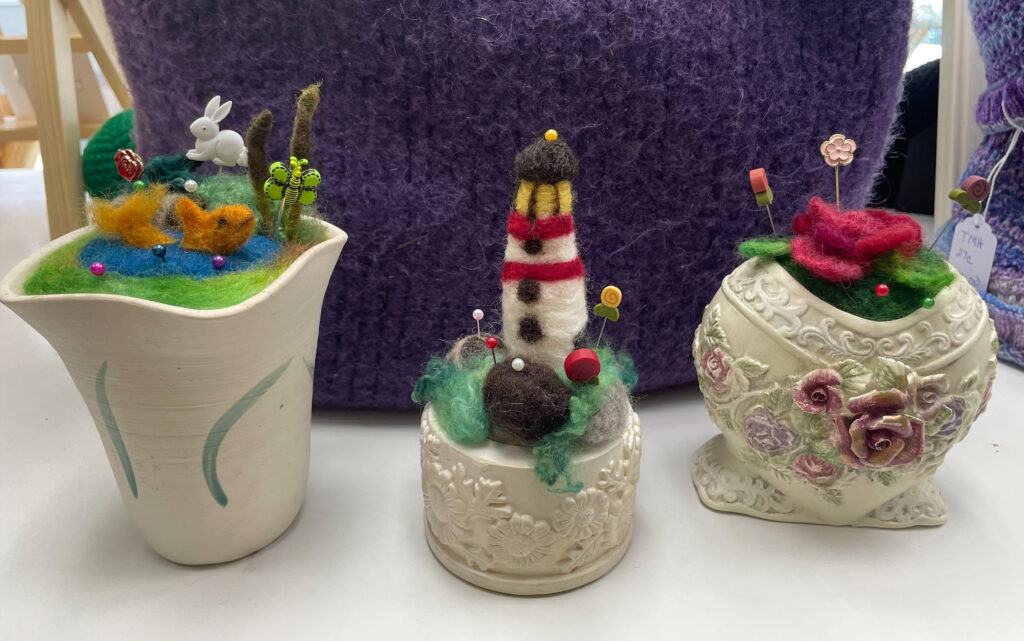All courses begin at 9:00am and are held at Montana City School, Montana City, unless otherwise indicated. HSWG business meetings occur during the lunch break, at 12:30pm-1:30pm.
September 20, 2025
Meet-and-greet, old and new members
- Summer project show and tell
- Class sign ups: hopefully we can have a sample of most of the finished projects for members to see
- Bring anything you are working on: weaving, spinning, knitting, crocheting, etc.
Introduction to profile drafting
Instructor: Mary Jean Martin
(1–4pm, after business meeting)
October 18 and 19, 2025
The art of warp dyeing
Instructor: Liz Moncrief
(1-day class; may be extended to 2 days if more than 10 people on the waiting list)
More details
Use and care of a knitting machine
Instructor: Marilyn Lytle
(2-day class) Please plan to bring your machine if you have one.
November 15 and 16, 2025
Tapestry weaving
Instructor: Joanne Hall
(2-day class)
More details
December 2025 (exact date TBD)
Holiday party and gift exchange
at Annette Cade’s home
January 17 and 18, 2026
Beginning weaving: tote bag project
Instructor: Joanne Hall
(2-day class; begin project on ROC day, January 3, 2026)
More details
Profile drafting
Instructor: Mary Jean Martin
(1-day class)
Handwoven.net demonstration
Instructor: Jane Fournier
(1-day class, Saturday)
Instructor: Trudy Moffett
(occurs in conjunction with Profile Drafting)
February 21 and 22, 2026
Rigid-heddle weaving
Instructor: Joanne Hall
(2-day class)
More details
Teacup pincushions
Instructor: Laurel Orthmeyer
(1- or 2-day class)

March 21 and 22, 2026
Basket weaving with linen
Instructor: Hadassah Moffett
(2-day class)
Backstrap band weaving
Instructor: Joanne Hall
(2-day class)
More details
April 18 and 19, 2026
Spinning mentoring for beginners and experienced spinners
Instructor: Jane Fournier
(1-day class, Saturday)
Spinning cordage and/or fiber for braiding to add to other projects
Instructor: Jane Fournier
(1-day class, Sunday)
May 16 and 17, 2026
Fiber dyeing
Instructor: Laurel Orthmeyer
(class at Laurel’s home; limited to 10 students)